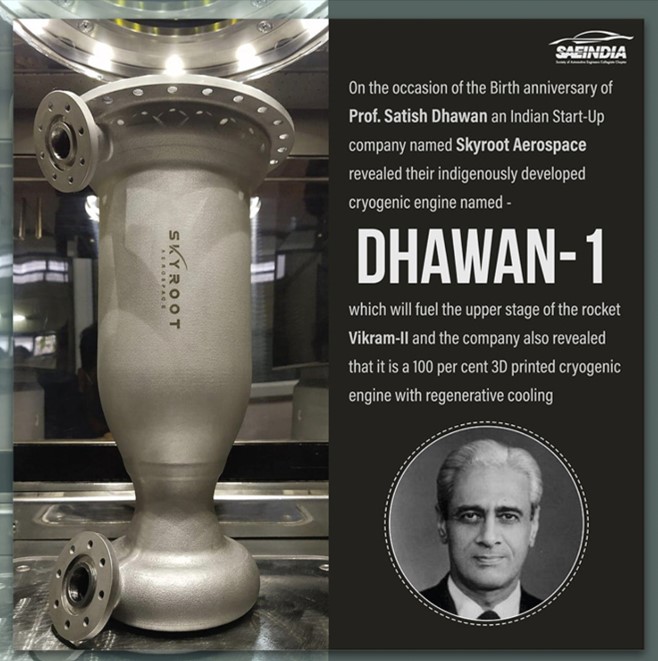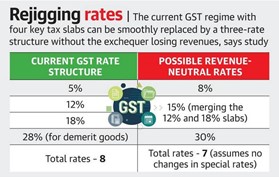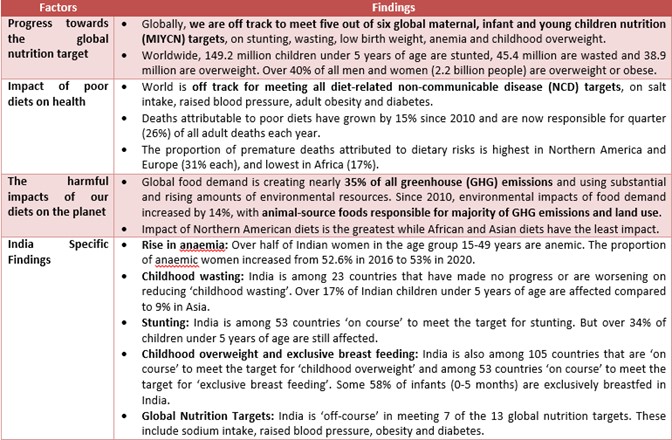Wednesday, 1st December 2021
National Courts of Appeal
In News
On Constitution Day, Attorney General KK Venugopal argued in favour of the revival of a 11-year-old proposal to set up National Courts of Appeal in four regions of the country.
What is a Court of Appeal?
- A court of appeal is an intermediary court between the High Courts (HC) and the Supreme Court (SC) for hearing appeals from the HC.
- They would absorb matrimonial disputes, rent control cases and such like which clog the Supreme Court, adding to pendency. The judgments of these courts of appeal would be final.
- Hence, the SC would be able to function with fewer number of judges by hearing only cases of constitutional nature.
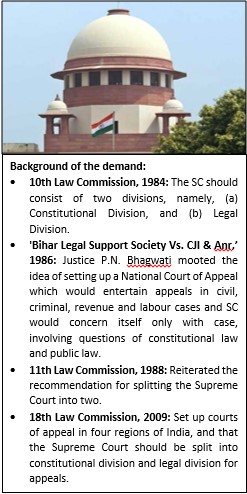
Need for establishing Court of Appeal
- High Pendency of cases: The Supreme Court is the top court with wide jurisdiction of original, appellate and advisory in nature.
- The issue of pendency of cases before it that stood at more than 70,000 in early November.
- High load of appeals: The SC is the highest court of civil and criminal appeal and has overriding powers over any court or tribunal in India except armed forces tribunals.
- As a report from 2014 points out, of the 888 final judgments pronounced by the apex court that year, only 64 involved a constitutional matter.
- Public Interest Litigation (PIL): Number of PILs, which can be moved even in the form of a letter addressed to the CJI have risen in recent times.
Is a National Court of Appeal a good option?
- In 2016, a five-judge bench of Supreme Court stated that “no effort should be made to restrict the powers of this Court under Article 136" and that “it would be better to use the said power with circumspection, rather than to limit the power forever".
- It is pointed out that the setting up of regional courts of appeal would, rather than bringing total pendency down, serve to actually see an increase in litigation.
- The problem of pendency of cases is not so much of a problem for the top court as it’s with the lower courts and the that quality of the justice delivery mechanism has to be improved at the level of the lower judiciary.
- Any move to change the jurisdiction of the Supreme Court and the restructuring of the judicial hierarchy would be restricted by Article 130 of the Constitution.
- Article 130 of the Constitution provides that the Supreme Court shall sit in Delhi or in such other place or places as the Chief Justice of India with the approval of President, from time to time appoint.
Sources:
Joint Comprehensive Plan of Action
In News
The signatories of Iran nuclear deal are back to the negotiation table in Vienna to discuss the restoration of the 2015 agreement which aimed to ensure that Iran cannot build a nuclear weapon.
Nuclear question in middle east:
- Iran’s perspective: Iran has always insisted that its nuclear programme is peaceful.
- United States' perspective:
- A focus of concern was Iran's production of enriched uranium, which has civilian uses but can also be used in nuclear weapons.
- Negotiating nations feared that Iran’s moves to become a nuclear weapon state risked thrusting the region into a new crisis.
- It may prompt military action from Israel and other non-nuclear states of the region may start their nuclear weapon program.
- Sanction imposed: Suspicions that Iran’s civilian nuclear program was being used as a cover to develop a nuclear bomb prompted the UN, US and the EU to impose crippling sanctions on Iran from 2010.
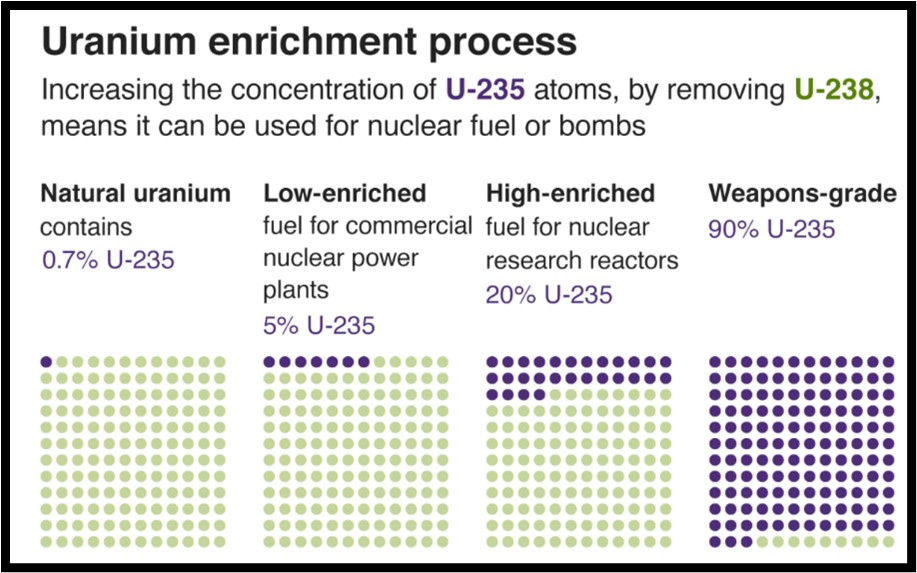
The Joint Comprehensive Plan of Action (JCPOA)
- It is a landmark accord reached between Iran and several world powers, including the United States, in July 2015, informally called “The Iran nuclear agreement”
- Objective: It would help prevent a revival of Iran’s nuclear weapons program and thereby reduce the prospects for conflict between Iran and its regional rivals, including Israel and Saudi Arabia.
- Participants: Iran, P5+1 (five permanent members of the UN Security Council - China, France, Russia, the United Kingdom, and the United States- and Germany), The European Union.
- Agreement:
- Iran:
- Nuclear restrictions: Iran agreed not to produce either the highly enriched uranium or the plutonium that could be used in a nuclear weapon.
- Monitoring and verification: Iran agreed to eventually implement a protocol that would allow inspectors from the International Atomic Energy Agency (IAEA)
- The accord limits the numbers and types of centrifuges Iran can operate, the level of its enrichment, as well as the size of its stockpile of enriched uranium.
- P5+1:
- Sanctions relief: The EU, United Nations, and United States all committed to lifting their nuclear-related sanctions on Iran.
- The parties agreed to lift an existing UN ban on Iran’s transfer of conventional weapons and ballistic missiles after five years if the IAEA certifies that Iran is only engaged in civilian nuclear activity.
- Current status:
- The deal has been near collapse since President Trump withdrew the United States from it in 2018 and reinstated banking and oil sanctions.
- In retaliation for the U.S. departure Iran has resumed some of its nuclear activities.
- Iran:
Recent updates:
- Both Iran and the United States insist that they want to return to the deal, known as the Joint Comprehensive Plan of Action, or JCPOA.
- The Vienna talks are intended to create a road map for a synchronized return of both Iran and the United States to compliance with the 2015 deal.
- Iran struck a hard-line after just one day of restarted talks in Vienna, suggesting everything discussed in previous rounds of diplomacy could be renegotiated.
Sources:
FAME-II scheme
In News
FAME-II is noted to have so far disbursed just under 10% of the total fund earmarked to be given as purchase subsidies with just four months to meet its deadline.
About the News
- Faster Adoption and Manufacturing of (Hybrid &) Electric Vehicles in India (FAME India) Scheme is an Indian government's flagship electric vehicles (EV) promotion scheme launched in 2015 by the Department of Heavy Industry.
- It was launched as a part of the National Electric Mobility Mission Plan (NEMMP) 2020 for the faster adoption of electric vehicles and their manufacturing in the country.
Features of the scheme
Phase I of the Scheme was implemented from 2015 till March 2019, while Phase II commenced from April 2019 and is to to be completed by 31st March, 2022.
FAME I:
- The phase 1 of the scheme focused on four Primary Areas namely:
- Technology development
- Demand Creation
- Pilot Projects
- Charging Infrastructure
- Market creation through demand incentives was aimed at incentivizing all vehicle segments i.e. 2-Wheelers, 3-Wheelers Auto, Passenger 4-Wheeler vehicles, Light Commercial Vehicles and Buses.
FAME II: The primary focus of the second phase of the scheme includes:
- Electrification of public transportation emphasized, including shared transport.
- To provide support through subsidies to approximately 7000 e-Buses, 5 lakh e-3 Wheelers, 55000 e-4 Wheeler Passenger Cars and 10 lakh e-2 Wheelers.
- In 3-Wheeler and 4-Wheeler segment, vehicles used for public transport or registered for commercial purposes and in the 2-Wheeler segment, private vehicles to be incentivized.
- Advanced technologies to be encouraged. The benefits of incentives will be extended to only those vehicles which are fitted with advanced batteries like a Lithium-ion Battery and other new technology batteries.
- The scheme also proposes for establishment of charging infrastructure, whereby about 2700 charging stations will be established in metros, other million plus cities, smart cities and cities of Hilly states across the country.
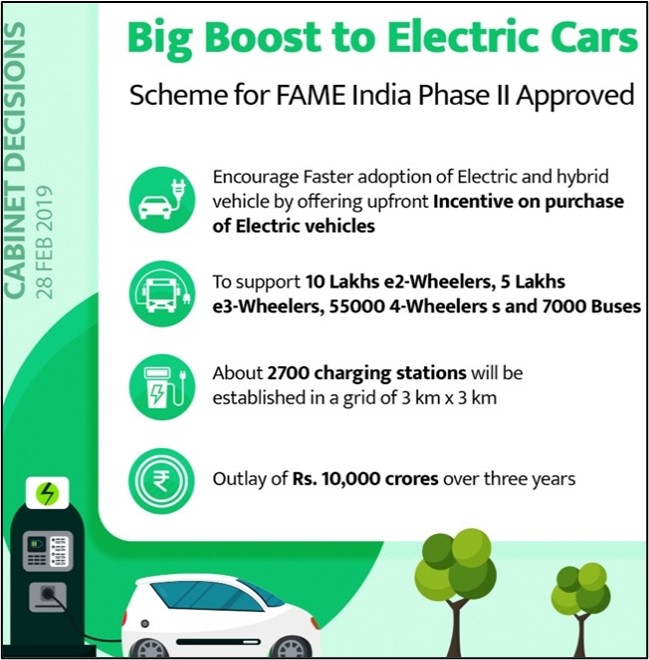
Source:
World AIDS Day - Edukemy Current Affairs
On 1 December, 1988 World AIDS Day was announced. People around the world unite to show support for people living with and affected by HIV and to remember those who lost their lives to AIDS. This World AIDS Day, UNAIDS is highlighting the urgent need to end the inequalities that drive AIDS and other pandemics around the world with its theme ‘End inequalities. End AIDS’. As per World Health Organization's latest data, 3.77 crore people were living with AIDS in 2020. Though the world has made significant progress since the virus was first discovered in 1984, important targets for 2020 were not met. As far as vaccines are concerned, there is still none to protect people from the HIV even after 35 years of the discovery of the disease.
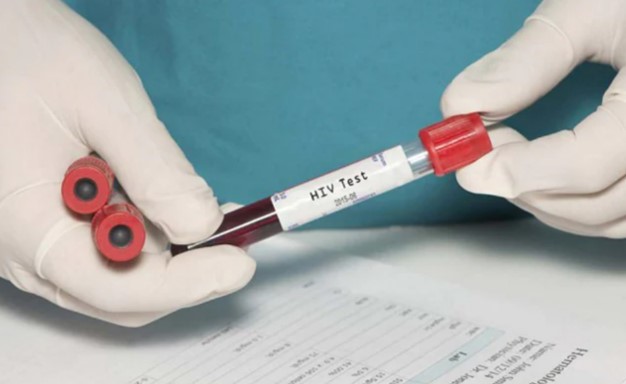
Source:
Online Dispute Resolution
In News
NITI Aayog recently released the report ‘Designing the Future of Dispute Resolution: The ODR Policy Plan for India’, to scale dispute avoidance, containment and resolution online.
What is Online Dispute Resolution (ODR)?
- Meaning: In its most basic sense, ODR is the use of technology to ‘resolve’ disputes. It is not just any form of technology integration (such as electronically scheduling a session), but its active use to help resolve the dispute (such as video conferencing for hearings or electronic document sharing for filing).
- Types: These ODR Platforms can be divided under three categories: Government-run ODR Platforms, Court-annexed ODR Platforms, and Private ODR Platforms.
- Need for ODR: The Covid-19 pandemic resulted in a large section of society unable to receive timely access to justice. The pandemic also led to a deluge of disputes further burdening the already lengthy court processes.
- ODR has the potential to help reduce the burden on the court and efficiently resolve several categories of cases. It may also be integrated to support the judiciary through technology integration in court-annexed Alternate Dispute Resolution (ADR) centres, via e-lokadalats and also be introduced within Government departments for internal disputes.
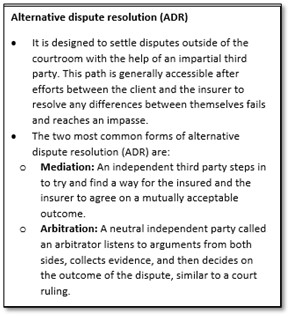
Benefits of ODR
- Cost effective: By its very nature, ODR does not require parties to travel long distances or rent a facility to conduct the dispute resolution. Further, ODR has the potential to reduce legal costs, by way of reduced time for resolution and by doing away with the need for legal advice in select categories of cases.
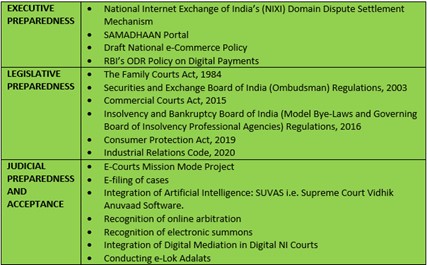
- Convenient and quick: As per the India Justice Report, 2019, in 21 States and Union Territories, cases in District Courts remain pending for 5 years on average or more. ODR can address such delays by providing a faster and more convenient process for resolution of disputes.
- Allows for customisable processes: Over the past few years, ADR has seen a lot of variants emerge, that go beyond the traditional ADR processes such as arbitration and mediation. ODR’s integration with such non-traditional ODR processes and use of artificial intelligence can lead to limitless possibilities in terms of the types of models that can be developed.
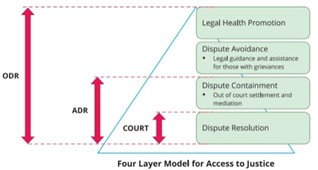
- Encourages dispute resolution: ODR can contribute significantly to improve access to a variety of dispute resolution processes by addressing major concerns such as lack of access to physical courts or ADR centres, cost of dispute resolution as well as the barriers due to disabilities.
- Limits implicit bias caused by human judgment: Studies have identified that implicit bias and anxiety to communicate with members of different communities can influence the outcome of mediation. ODR processes can lessen the unconscious bias of the Neutral while resolving disputes.
What can be the Potential challenges in ODR acceptance?
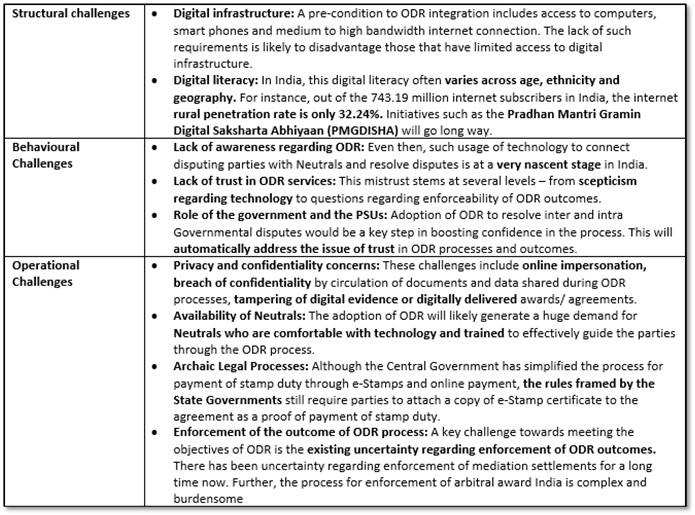
Way Forward: Recommendation of the Committee
- Infrastructure Accessibility: If ODR is indeed to be mainstreamed and broad-based in India, sufficient capacity and infrastructure will have to be developed in the country. Targeted initiatives can be introduced to increase digital/ technology access among people that are often placed on the margins.

- Some initiatives taken by the Government like BharatNet project are already working towards making this a reality.
- Capacity Building: Apart from infrastructure, even the current capacity of the ecosystem has to be maximized and then progressively increased for the future. For instance, through collaborative and systematic efforts from various stakeholders, the number of trained and qualified ODR professionals can be increased.
- Role of Government and Judiciary: To give a boost to ODR in India, the Government and the judiciary must lead by example. For instance, adopting ODR for Government litigation will increase the trust that people place in ODR processes. The judiciary and the Governments can collaborate to integrate ODR into the workings of the court annexed centres.
- Governance Framework: Since ODR is still in its nascent stages of development in India, it is important that the governance framework encourages the growth of innovation both within the Government and in the private sector. To enable this, a balance has to be struck between protecting the rights and interests of its users while ensuring that over-regulation does not stifle innovation.
- This can be done by strengthening the existing legislative framework for ADR and introduce ODR related amendments.
Question: Discuss the benefits and challenges associated with Online Dispute Resolution process.
Sources:
World’s largest organism
This is image of the world’s largest organism, a large Aspen tree is slowly being eaten by deer. A clonal grove of the Aspen in Utah's Fishlake National Forest is also known as ‘Pando’ meaning "I spread" in Latin. A clonal grove is swaths of forest connected underground by a single network of roots, with each trunk genetically identical to the others. The Aspen’s 47,000 stems cover more than 100 acres. It is among the largest and oldest organisms on Earth, probably at least 80,000 years old. Essentially, it is a single tree with multiple clones growing upwards. Pando has survived this way since the last ice age had passed, but scientists are worried it may not be able to clone itself quickly enough to stay alive in the future. Overgrazing by deer and elk and climate change-related pressures are the biggest reasons for its decline.
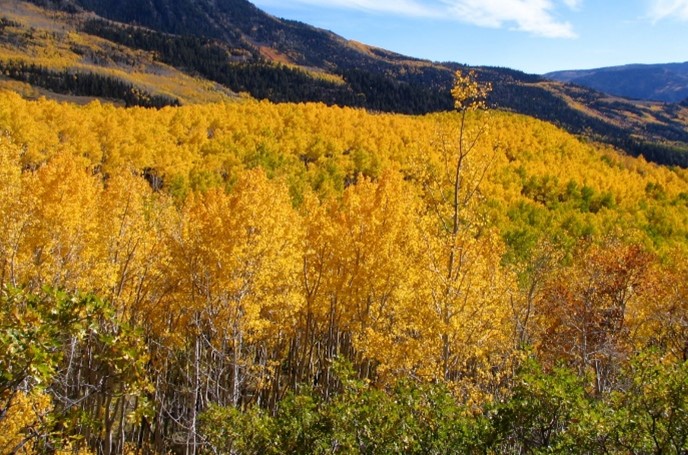
Source:
Manodarpan
- Context: The Ministry of Education has undertaken an initiative named, ‘Manodarpan’.
- It is a proactive initiative that covers a wide range of activities to provide psychosocial support to students, teachers and families for Mental Health and Emotional Wellbeing during the COVID outbreak and beyond.
- It encompasses a number of components such as
- Advisory Guidelines for students, teachers and faculty of School systems and Universities along with families
- A web page carrying advisory on the Ministry of Education’s website
- Dos and don’ts for psychosocial support
- National level database and directory of counsellors at School and University levels,
- National Toll-free Helpline
- Webinars & audio-visual on physical and creative well-being of students etc.
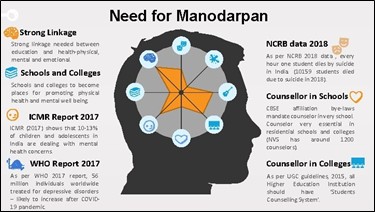
- The program originated in the backdrop of outbreak of the global pandemic COVID-19 and mental health issues corresponding to it (adolescents more disposed to stress, anxiety, fear and loneliness as they were stranded at home due to closure of all educational institutions), Postponement/Cancellation of exams mid-way etc.
Source:
National Mission on Cultural Mapping and Roadmap
Context: National Mission on Cultural Mapping has mapped data of 14.53 lakh artists/artisans.
- National Mission on Cultural Mapping is a mission mode project of the Ministry of Culture launched in 2015.
- It aims to preserve the threads of rich Indian Art and Cultural Heritage and to convert vast and widespread cultural canvas of India into an objective Cultural Mapping.
- It creates a database of organizations, spaces, facilities, festivals and events that acts as a resource for the media, researchers and funders.
- It will identify, collect and record cultural assets and resources and correlates this to planning and strategizing.
- The 3 main objectives of this mission include:
- National Cultural Awareness Abhiyan: Hamari Sanskriti Hamari Pahchan Abhiyan (Our Culture Our Identity)
- Nationwide Artist Talent Hunt/Scouting Programme: Sanskritik Pratibha Khoj Abhiyan
- National Cultural Workplace: Centralised Transactional Web Portal with database and demography of cultural assets and resources including all art forms and artists.
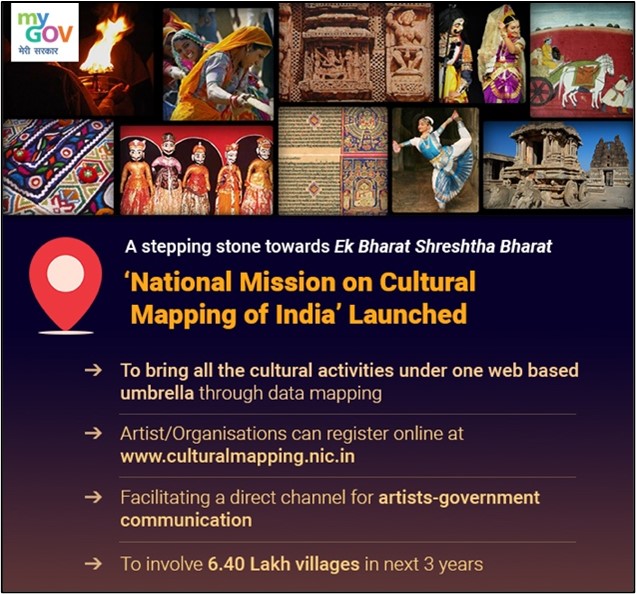
Source:
Flycatcher Species
- Context: A recent study has noted that Western Ghats flycatchers could lose one-third of their range due to climate change.
- The Black-and-orange Flycatcher (BOF) and the Nilgiri Flycatcher (NIF) are monotypic species endemic to the southern Western Ghats and confined to higher elevations.
- The Western Ghats have an exceptionally high level of biological diversity and endemism and are recognised as one of the world’s eight ‘hottest hotspots’ of biological diversity.
- BOF prefers the understorey of shola forests, especially bamboo thickets, among the stunted evergreen forest patches of Western Ghats and distributed above 700m-1500 m altitude.
- The NIF is found above 600-1200 m elevation and they inhabit degraded forests and plantations of timber, tea, coffee and cardamom adjacent to the forest areas. NIF mainly feeds on invertebrates besides fruits and berries.Both these flycatchers are categorized as ‘Least Concern’ (LC) according to the IUCN Redlist and fall under ‘moderate’ conservation concern according to the current state of India’s Birds report.
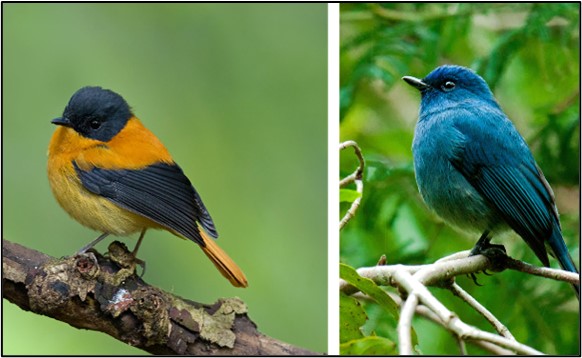
Source:
James Webb Space Telescope
Context: The James Webb Space Telescope would be searching for the first formed galaxies.
- The James Webb Space Telescope is NASA’s largest and most powerful space science telescope ever constructed.
- The Webb telescope is said to be the scientific successor to the Hubble and Spitzer space telescopes.
- It will operate much farther from Earth (1.5 million km away) and will send data to Earth via a high-frequency radio transmitter and large radio antennas part of the NASA Deep Space Network will receive these signals.
- It has four scientific instruments namely Near-Infrared Camera, Near-Infrared Spectrograph, Mid-Infrared Instrument, and Near-Infrared Imager and Slitless Spectrograph.
- The telescope will hunt for the unobserved formation of the first galaxies, as well as to look inside dust clouds where stars and planetary systems are forming today.
- The collected data will help find answers to questions in four areas of modern astronomy- first light, assembly of galaxies, birth of stars and protoplanetary systems and planetary systems and the origin of life.
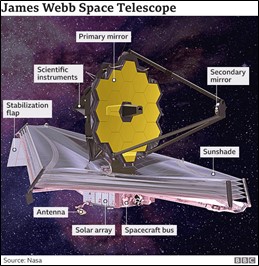
Source:
With India’s demographic transition, come challenges: IE
Essence: NFHS 5 data on Total Fertility Rate (TFR) suggests that India has reached a replacement level of fertility. This is good news but there are challenges too. Firstly, the older population grows and there is an issue of taking care of them. Secondly, the workforce shrinks. This trend is seen in prosperous states like Kerela which also depends on migrant workers from states like UP and Bihar for their economic activities. It is important to focus on rewarding those states which provide workforce to the prosperous states. Also, population per constituency in northern states is more than southern states. However, the 15th Finance Commission has made a criterion to reward states with lower TFR which raises a question if demographic performance should continue to trump principle of equity.
Learning from China’s experience, aiming for a lower fertility rate below 1.5 will be a mistake. As it shows it will mean increased burden of caring for elderly. India is in a better position with though having smaller demographic dividend but is going to last for a more extended period. As southern states struggle with the growing burden of supporting the elderly, northern states and the migrant workers will supply the workforce needed for economic growth. Thus, the suggestion is to follow this path of moderate fertility decline coupled with inter-state sharing of demographic dividend. All in the spirit of federalism.
Why to read this article?
- To know why the decline of TFR in India is both good news and bad one.
- To understand what will be the effect on southern states with the decline in fertility rate and where do northern states contribute in the entire issue.
- This issue becomes important for the topics of demographic dividend (Population GS I) as well as federalism (GS II) from the perspective of exams.
Source:
India’s informal economy has not shrunk: TH
Essence: The article contradicts the report published by SBI few days back claiming decline in the informal sector in the country along with subsequent increase in the formal sector. The report concluded on the basis of decline in the informal sector’s share in the GDP along with increase in the number of registrations on E-Shram portal. But the report failed to realize that the decline is due to the factors like lockdowns and consequent economic contraction.
Also registration means documentation, not formalization, of workers. There are certain formal sector activities considered informal, they were curtailed heavily too during the lockdown. Hence it could not be concluded that significant formalization of economy is being witnessed.
Why you should read this article?
- To understand the conclusive evidence of Indian economy not getting formalized.
- The article provides sufficient arguments to support that there is no decline in the informal sector taking place in the Indian economy. (GS-3, Economy)
Source:
A multipronged approach to protect ICT supply chains from cyberattacks: HT
Essence: The article highlights the potential threat of cyberattacks on Information and Communications Technology (ICT) supply chain. The attacks can affect governments, enterprises and public at large. These attacks have a modus operandi where the hackers target software vendors or information technology companies to gain backdoor access to the systems of their clients, infecting thousands of systems in one go. India too is focusing on a national cybersecurity strategy.
The National Security Council Secretariat has just launched an application programming interface to support Indian internet users in mitigating vulnerabilities in their mobile handsets. Also there have been attempts to intervene at the national, bilateral, regional, and global level. Given the integrated nature of ICT supply chain resilience, there is a need to develop core principles, technical standards and regulatory frameworks to ensure a consistent level of cybersecurity.
Why you should read this article?
- To understand the effects of threat of cyberattacks on supply chain system.
- To understand the steps taken by the government to mitigate such attacks.
Source:
Ride for Cause: An initiative for better school education
Background
- In 2018, 29,000 government and aided schools were shut down in Karnataka due to poor attendance and the deteriorating education infrastructure in these institutions.
- Moved by this, Rakesh Ramesh and Sanjay S started an NGO Ride for Cause in 2019 to support better education and infrastructure in Karnataka villages.
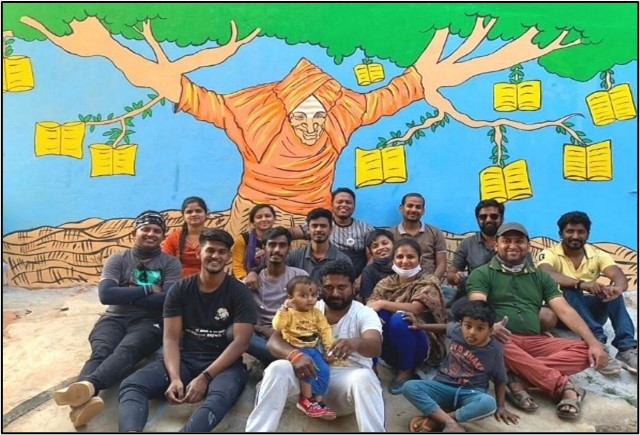
How is Ride for Cause changing the face of Government School?
- It has taken up the initiative to revamp the schools with the help of the locals to make the process self-sustaining.
- School walls are painted to make it attractive and supplied with school stationery and kits to the students.
- Later, other bikers joined them in the initiative, and they were successful in revamping 9 schools and increase the attendance by 15%.
- The NGO has approached Spin Master Global, a toy manufacturing company that has agreed to give away 2,000 toys for free.
Quote:
“A pencil and a dream can take you anywhere”- APJ Abdul Kalam
Source:
Share the article
Get Latest Updates on Offers, Event dates, and free Mentorship sessions.

Get in touch with our Expert Academic Counsellors 👋
FAQs
UPSC Daily Current Affairs focuses on learning current events on a daily basis. An aspirant needs to study regular and updated information about current events, news, and relevant topics that are important for UPSC aspirants. It covers national and international affairs, government policies, socio-economic issues, science and technology advancements, and more.
UPSC Daily Current Affairs provides aspirants with a concise and comprehensive overview of the latest happenings and developments across various fields. It helps aspirants stay updated with current affairs and provides them with valuable insights and analysis, which are essential for answering questions in the UPSC examinations. It enhances their knowledge, analytical skills, and ability to connect current affairs with the UPSC syllabus.
UPSC Daily Current Affairs covers a wide range of topics, including politics, economics, science and technology, environment, social issues, governance, international relations, and more. It offers news summaries, in-depth analyses, editorials, opinion pieces, and relevant study materials. It also provides practice questions and quizzes to help aspirants test their understanding of current affairs.
Edukemy's UPSC Daily Current Affairs can be accessed through:
- UPSC Daily Current Affairs can be accessed through Current Affairs tab at the top of the Main Page of Edukemy.
- Edukemy Mobile app: The Daily Current Affairs can also be access through Edukemy Mobile App.
- Social media: Follow Edukemy’s official social media accounts or pages that provide UPSC Daily Current Affairs updates, including Facebook, Twitter, or Telegram channels.

